
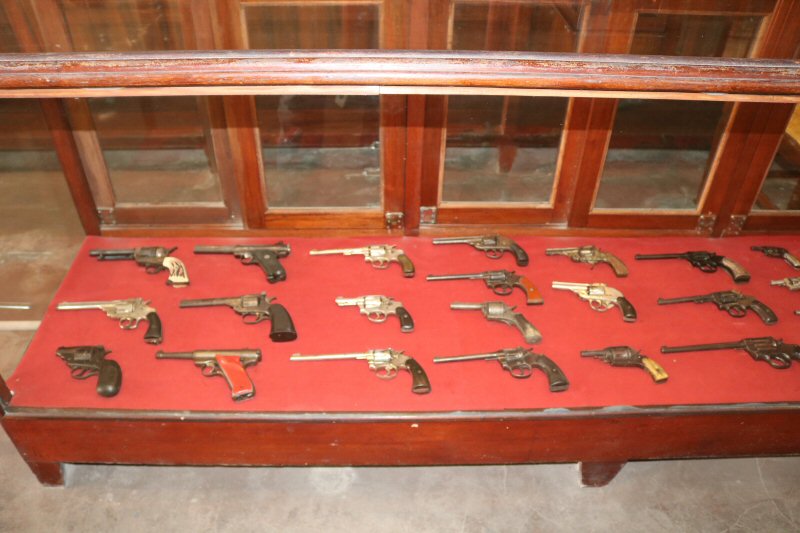
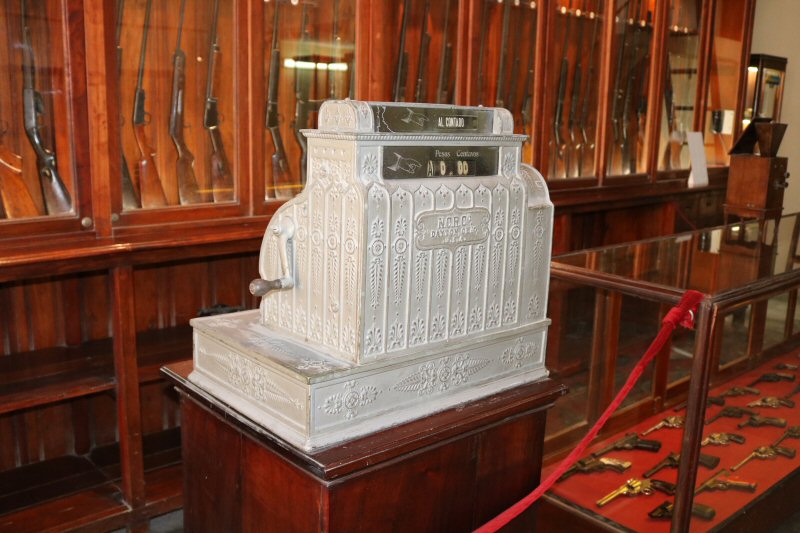
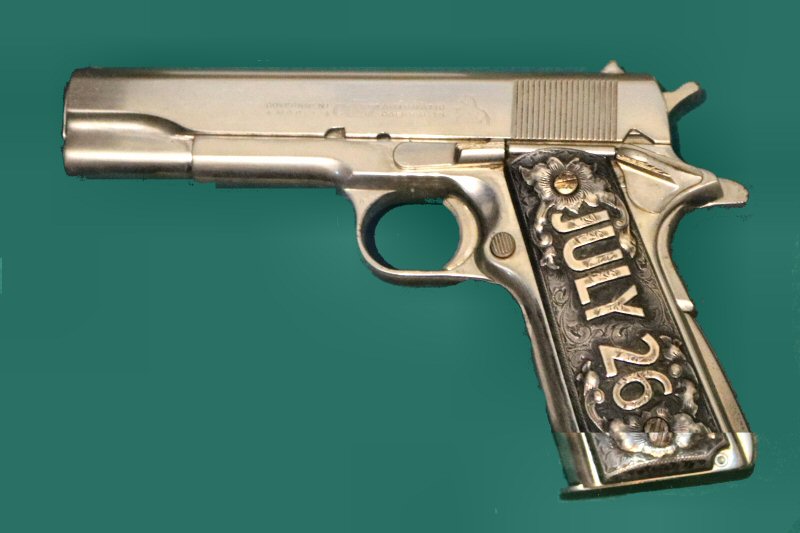
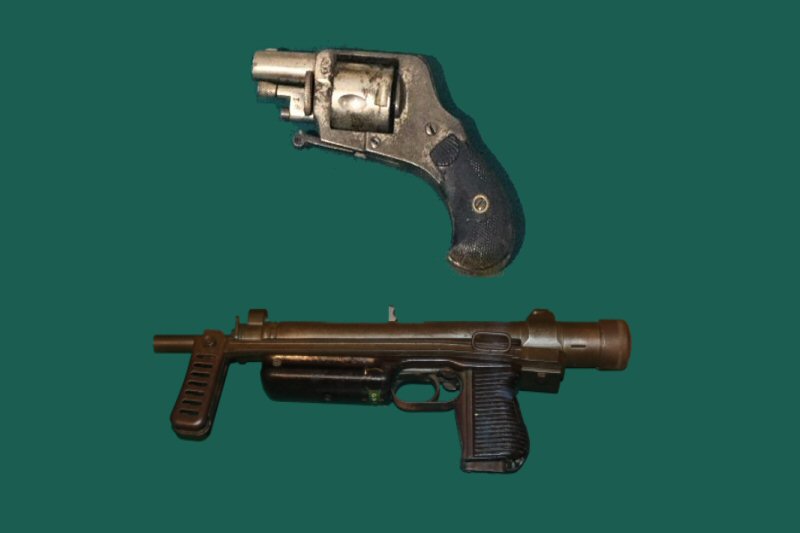
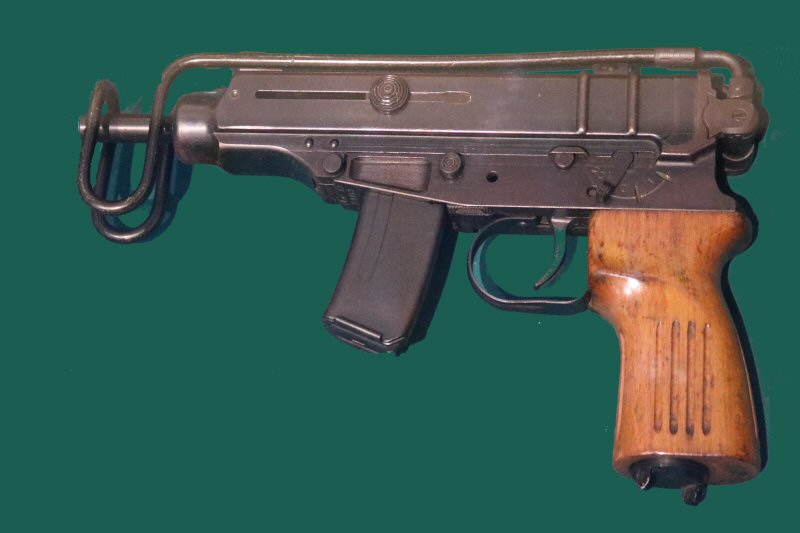
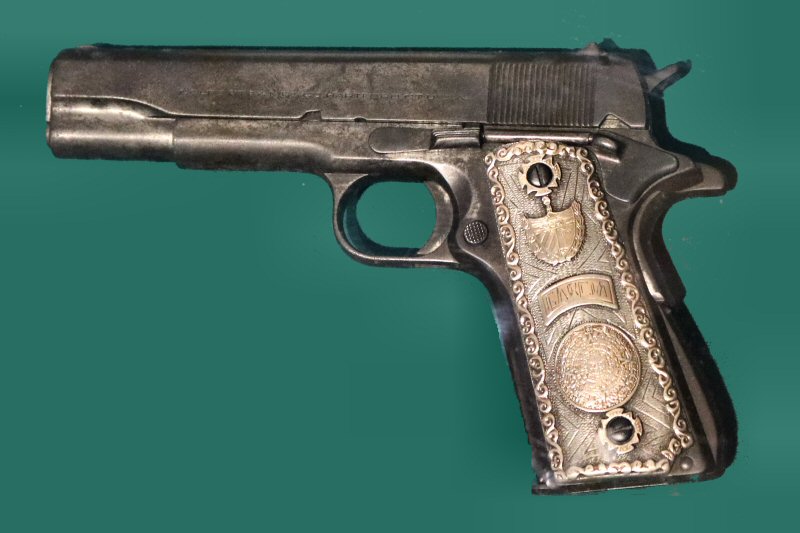
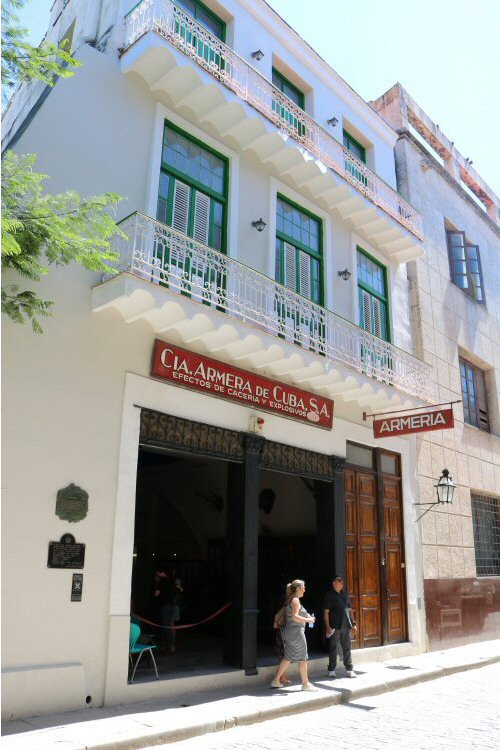
The Museo Armería 9 de
Abril occupies the former private gun shop
Compañía Armera de Cuba that was founded in
1934. When Fidel Castro’s 26th July Movement
decided to evoke a mass movement and called
general strike on the island in 1958, the rebels
attacked this shop in order to seize the
weapons, as they had to be armed against the
bloody tyranny of Fulgencio Batista. However,
the action failed, and four rebels were killed
during the assault (Carlos Astiazaraín, Marcelo
Muñoz, Roberto Casals and Reynaldo Aulet).
In 1959, the site was declared a Historic Site
and National Monument in remembrance of the
fallen rebels. In 1971 the building was
inaugurated as the Museo Armería 9 de Abril that
contained a large collection of firearms and
bladed weapons from the 18th to the 20th
century. Some of them belong to the figures
that played critical role in the history of
Cuba. In 1990s the museum was enriched by some
weapons donated by Fidel Castro.
The display cabinets in
front of the one-room museum are full of several
models of rifles. The reproduction of a spark
gun from the 18th century and the rifle set with
binoculars and bayonet draw the attention of
most of the
visitors. A few gunpowder horns are placed at
the top of the cabinet. There is also an
extensive collection of machetes, knives and
other cutters.
In another showcase
some weapons that witnessed important events,
are exhibited. The 1911 model, gold and silver
coated Colt that was the gift of the famous
American writer Frank Waters to Fidel Castro Ruz,
and another 1911 model Colt that was used in the
assault in July 26, are the most notable pieces
among the handgun collection. The Skorpion
sub-machine gun of Piti Fajardo that
participated in the rebel army as doctor and as
fighter on the Sierra mountains, stands out.
Also, the puppy revolver that belonged to Andrés
Torres Rodríguez who had participated in the
preparations of the strike in April 9, is
another historical weapon that was made in Spain
in 1925. The Springfield rifle from 1896 was
modified by the members of the Rebel Army (Ejército
Rebelde) on the Sierra Maestra mountains and a
charger with larger capacity was mounted on it.
You can read the inscription on the charger:
“July 26. Made in Sierra Maestra”. The 23-model
submachine from the 20th century, was used by
the Revolutionary Militia in the first year of
the Revolution. Another 1911 model Colt that was
the donation of the Colonel Armando Galarza, has
a nice embroidered grip with the shield of Cuba.
In separate showcases
the M2 Carabine that was used by Ernesto Che
Guevara on Sierra Maestra mountains and the
Beretta rifle that belonged to Celia Sánchez
Manduley are displayed.
The antique cash
register and the showcase full of medicine that
were used by the rebels, are the other details
of the museum. The radio Jewel is the donation
of Arturo Aulet Viada. It was used in the house
where explosives were manufactured and hidden.
On the back of
the museum, there are photos of those who died
during the assault, as well as a few documents
and newspaper articles from the time. The ties
that were made ready in the memory of July 26
and the handbills, printed to call the Cubans
for general strike, can be seen in the showcase.
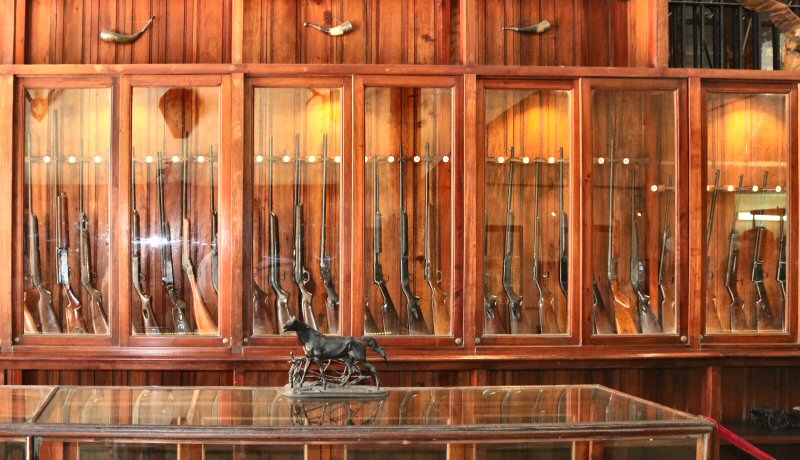
The Museo Armería 9 de Abril is located
on the Mercaderes street #157, between the Obrapia and the
Lamparilla streets.